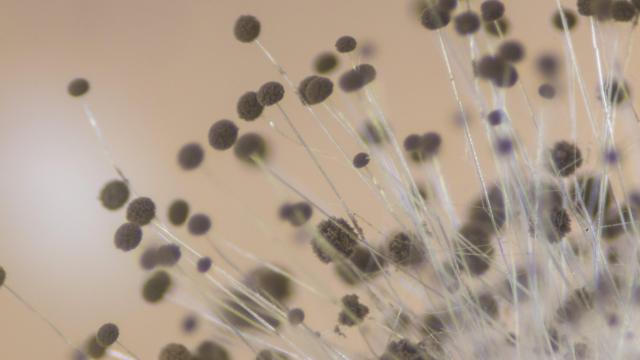That green stuff that grows on old bread — that’s mould, right? What about the black coating on damp parts of a basement? Which one has that musty smell? Basically: what’s the difference between mould and mildew? That’s exactly what Michael Rubino, author of The Mould Medic: An Expert’s Guide on Mould Removal, addressed in a recent article for mindbodygreen. Here’s what to know.
What’s the difference between mould and mildew?
In short: mildew is a type of mould. Per Rubino:
Molds come in all sizes, shapes, textures, and colours, while mildew is typically characterised by a white or grey powdery fungus.
When you see “mildew,” you are most likely seeing a mould that is in the Ascomycota division, which tends to be lighter in colour and more powdery in texture.
Which is the type that’s bad for your health?
That would be Aspergillus — a type of mould that can some people are allergic to, and can make you sick. Rubino says that Aspergillus “tends to look like a white/grey, powdery substance, fitting the bucket of ‘mildew.’” He goes on to explain where it can be found:
It’s a common but potentially harmful mould that we see often in the remediation industry throughout the home — mostly on windows and surrounding frames and sills; on doors and frames leading outside; under bath mats; on shower curtains, often between the liner and the curtain; and on bathroom grout or caulk.
How to get rid of mould and mildew
Even if you’re still unsure whether you’re dealing with mildew, or a different type of mould, it’s not something you want in your home. Now, the questions is whether you should attempt to clean it up yourself, or hire a professional.
If the mould makes regular appearances in your home — say, in the bathroom — Rubino says that there’s a good chance it’s in other rooms, too. In that case, he recommends getting a licensed mould inspector to take a look, assess the damage, and come up with a plan.
As far as cleaning it up yourself, what you need to do depends on the surface where the mould is growing. Here’s advice from Rubino:
Hard, nonporous surfaces
If you spot a one-off case of mildew on hard, nonporous surfaces like metal or glass, you can simply spray it with a mould remover (I recommend this one) and wipe the area down with a microfiber cloth. Since these areas are enclosed, the roots (hyphae) of mould will not have a chance to grow into them, so a quick clean should take care of things. Always be sure to discard the microfiber towel when you are done. Yep, do not wash it; discard it!
Semi-porous surfaces
If you spot mildew on surfaces that are semi-porous such as hardwood, you might need to sand the area down to fully remove the rootlike structures of mould. Otherwise, you run the risk of it easily growing back. (Think of mould as a weed: If you just remove the stem, it will continue to grow back. You have to get rid of the roots, too.)
Textiles
For mildew on textiles, you have two options: Either clean them with a fabric cleaner that can remove mould (this is the one I recommend) or replace them.

Leave a Reply
You must be logged in to post a comment.